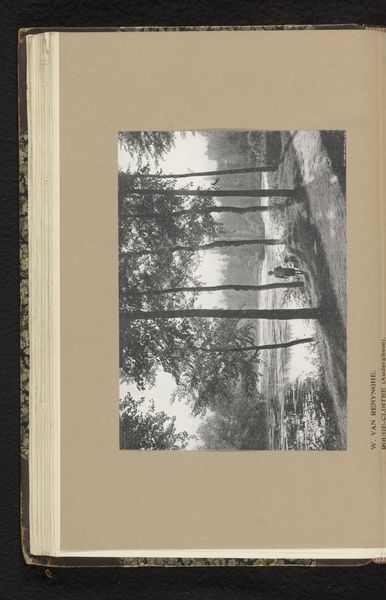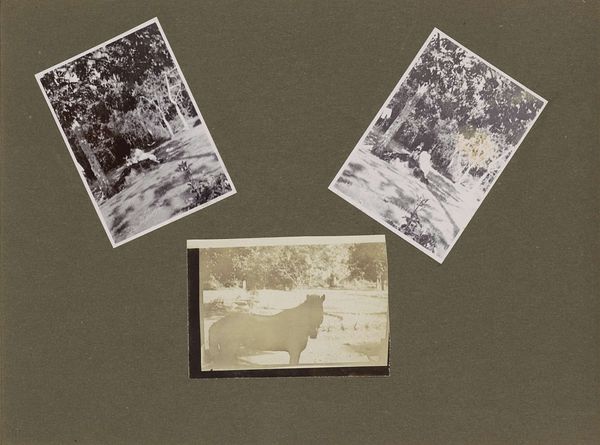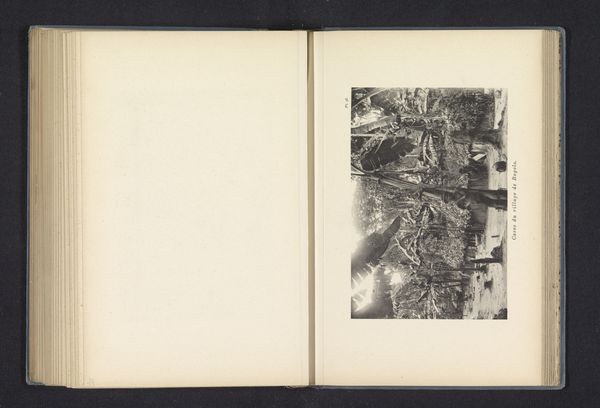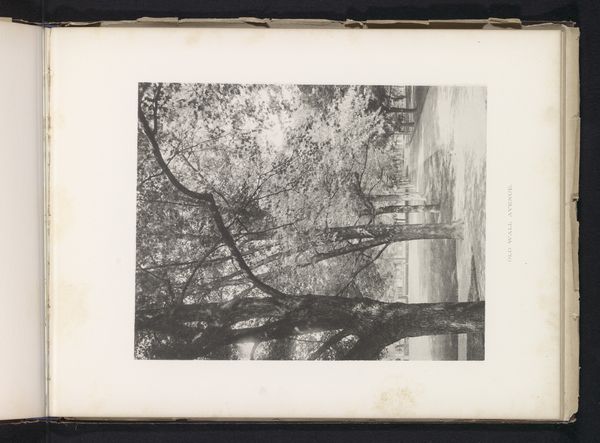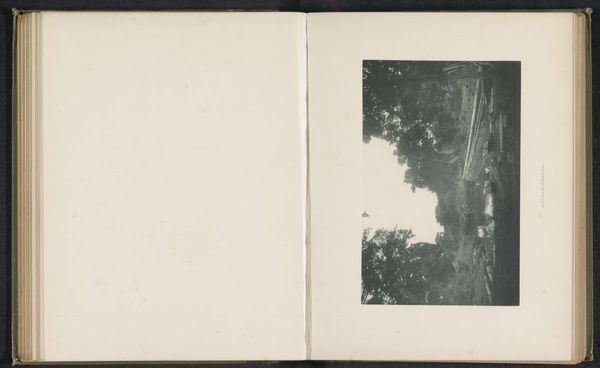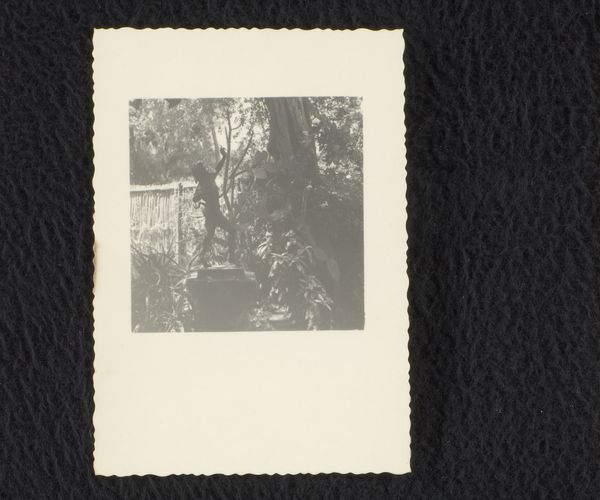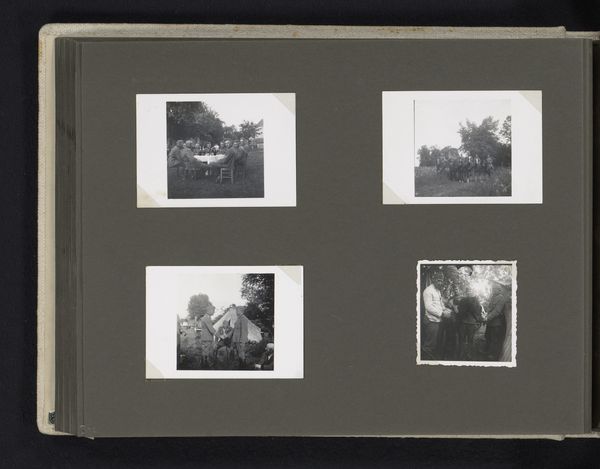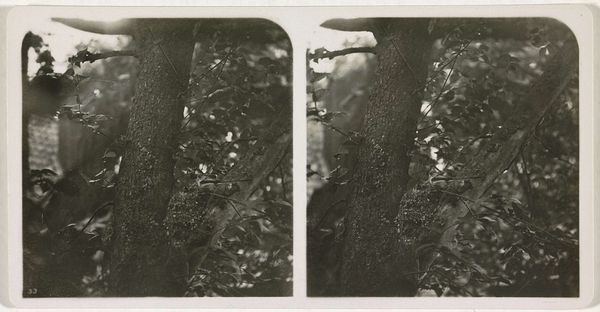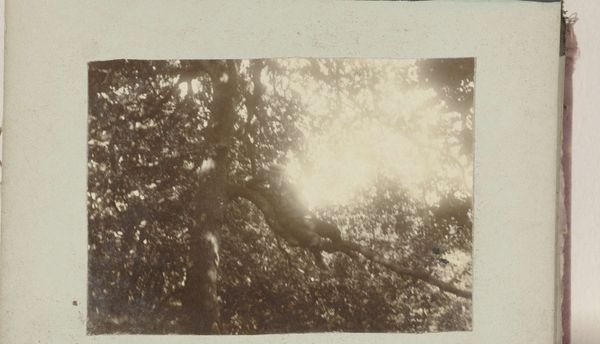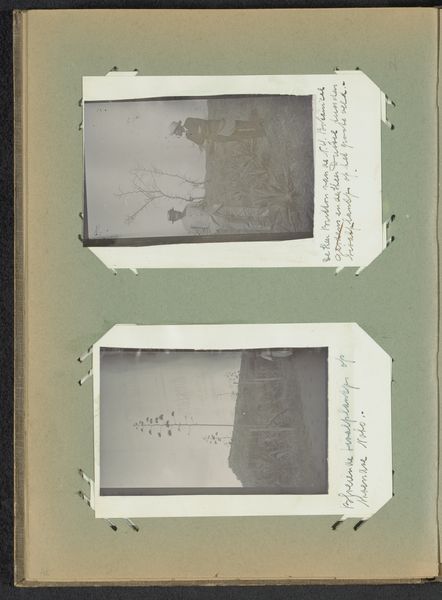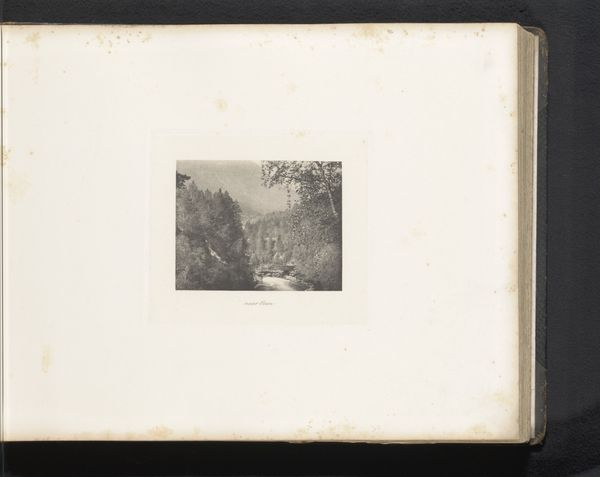
Dimensions: height 93 mm, width 63 mm
Copyright: Rijks Museum: Open Domain
Editor: This gelatin-silver print from 1933, shows Dootje van Zijll de Jong with a man by a lake, near Bandoeng. The figures are perched on a tree trunk extending over the water. There's a sense of quietude and colonial leisure. What do you see in this photograph? Curator: Immediately, the juxtaposition of the figures and the landscape triggers a kind of visual memory. Trees are often associated with knowledge, growth, a connection between earth and sky – the tree’s diagonal creates a liminal space between stability and the unknown. Who is the man alongside her? Is this posed? Editor: I'm not sure, it's just listed as 'a man.' There's definitely a staged feel. The light, although natural, seems carefully considered. The reflection on the water. Curator: Indeed. Consider the cultural memory embedded in photographic portraits of that era, especially those taken in colonial settings. Images often perpetuated an exoticized, romanticized view of the land and its inhabitants. Do you see this photograph challenging or reinforcing those visual stereotypes? Editor: Hmmm… It seems to lean into the romantic. The figures blend somewhat harmoniously into the scene; the colonial context feels…muted. But is that problematic? Curator: Not necessarily "problematic," but it raises questions. What visual narratives are intentionally being crafted, and which are being suppressed or overlooked? That reflective water, it seems almost…mythic? Consider its psychological resonance—water being symbolic of the unconscious mind, reflection and transformation. How might we interpret that in the context of colonial experience? Editor: That’s a lot to think about. Seeing it as a constructed, idealized moment makes the photograph more complex. It goes beyond just being a pretty landscape. Curator: Exactly! By unpacking those layers, the image resonates with broader histories, psychological archetypes, and lasting colonial legacies.
Comments
No comments
Be the first to comment and join the conversation on the ultimate creative platform.
